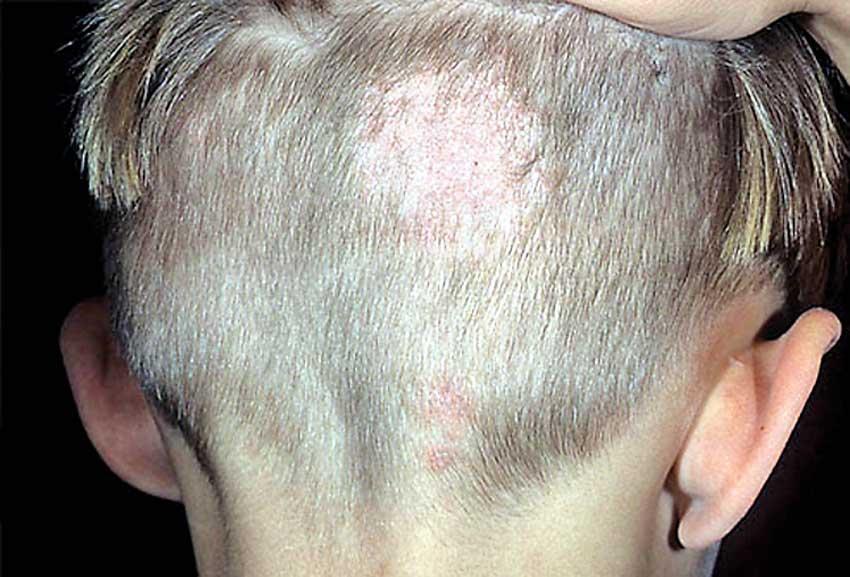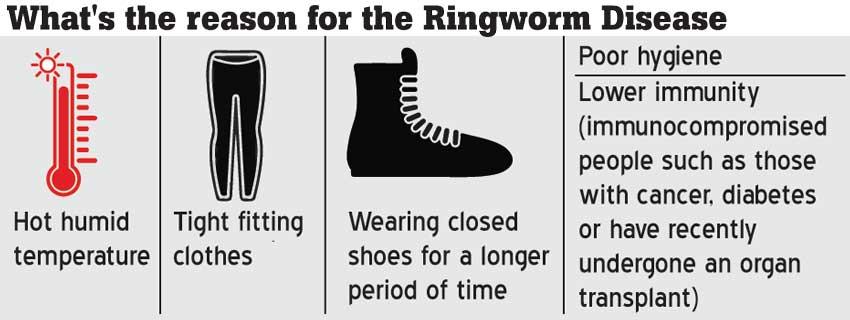29 May 2020 - {{hitsCtrl.values.hits}}

 For the past few months, dermatologists have noted an increased prevalence of ringworm disease but the worrying part of it, as Dr. Nayani Madarasingha, Consultant Dermatologist, states is that the disease does not respond to current treatment methodologies and seems to be extensive. This disease which is a common skin infection has been prevalent for a long time however it usually responds to the treatment given. Ringworm disease unlike its name is not caused by a worm but is caused by a fungi and is contagious. It is a common fungal skin disease that occurs when the fungi affects the keratin containing cells (skin, hair and nails). The disease is not fatal as the fungi only affects the superficial skin layer. Symptoms of this diseases differs according to the site of infection:
For the past few months, dermatologists have noted an increased prevalence of ringworm disease but the worrying part of it, as Dr. Nayani Madarasingha, Consultant Dermatologist, states is that the disease does not respond to current treatment methodologies and seems to be extensive. This disease which is a common skin infection has been prevalent for a long time however it usually responds to the treatment given. Ringworm disease unlike its name is not caused by a worm but is caused by a fungi and is contagious. It is a common fungal skin disease that occurs when the fungi affects the keratin containing cells (skin, hair and nails). The disease is not fatal as the fungi only affects the superficial skin layer. Symptoms of this diseases differs according to the site of infection:
Mainly, the disease transmits through person to person contact. Dr. Madarasingha stated that this disease could be contracted if one shares towels, combs, clothes and bedding linen with an infected person.

Current rise
As for the current rise in the disease, Dr. Madarasingha pointed out the following causative factors:
For the prevention of contracting this disease, Dr. Madarasingha stated one should have good personal hygiene, wear loose clothes that are suitable for the hot climate and open footwear.
Treatment
“Usually treatment is conducted as per the severity of the disease. In mild cases, topical cream is prescribed. In severe cases, oral antifungal drugs are prescribed. Dosage and duration vary according to the severity and site of involvement,” she explained adding that people must adhere to the treatment for the specified time period and also follow up with the doctor if they were requested to follow up.
“Antifungal resistance has not yet been proven in Sri Lanka, however neighbouring countries have proven that antifungal resistance can cause the disease to not respond to treatment,” she stated. She also pointed out that steroid abuse can be a reason. “Due to the itchiness, people tend to self medicate so as to relive it quickly. Dr. Madarasingha urged that people must seek medical help at the first sign of infection as it is easily curable at that stage.

21 Dec 2024 5 hours ago
21 Dec 2024 7 hours ago
21 Dec 2024 21 Dec 2024
21 Dec 2024 21 Dec 2024
21 Dec 2024 21 Dec 2024